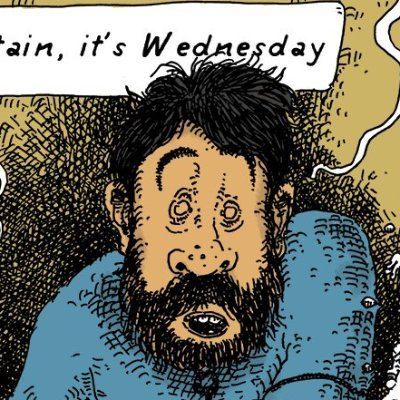
Anjan Venkatesh
@AnjanVenkatesh
Followers
321
Following
2K
Media
17
Statuses
143
Bioinformatics postdoc, Krogan Lab @ UCSF | Interested in proteomics, PPI prediction, and saying hi to neighbourhood pets.
San Francisco
Joined September 2020
Delighted to share that I started a new position as a postdoctoral researcher with the Krogan Lab in UCSF this month! Foregoing the customary Golden Gate Bridge photo for this shot of the "Dreamcatcher" on the Koret Quad against a lovely blue sky ( https://t.co/xU2BaFOyTL).
0
0
3
Happy to share that I successfully defended my PhD thesis last Friday! Many thanks to my supervisor @colmr for the support and guidance, and to the examiners @pedrobeltrao, @denshields, and @dimhatzo for a great discussion.
4
2
28
if you're interested in this work, or more generally in systematic approaches to understand how paralogs contribute to cancer / other diseases, we will have a PhD position shortly. mail me for more details
Very pleased to see my PhD work out as a preprint in bioRxiv! Here, we set out to answer a basic question— how come gene loss in cancer doesn't break protein-protein interaction networks? (1/17)
0
2
9
Huge congrats to Anjan for getting this out. Compensation between paralogs allows cancer cells to tolerate mutations that might otherwise be lethal. But what does this compensation look like? What are the proteins involved doing?
Very pleased to see my PhD work out as a preprint in bioRxiv! Here, we set out to answer a basic question— how come gene loss in cancer doesn't break protein-protein interaction networks? (1/17)
1
2
17
Many thanks to Science Foundation Ireland and Irish Research Council for sponsoring this work, to @colmr for the guidance and support, all co-authors for their efforts, and to @ucddublin, @GenomicsCRT, @ucdconwayinstitute, @sysbioire, @UCDCompSci, and @UCDMedicine! :)
1
2
5
In summary, we propose a model where gene loss of important proteins in cancer cells leads to increased incorporation of their paralogs into protein complexes, causing increased abundance. Cancer cells then become dependent on these compensating paralogs for survival. (17/17)
1
0
0
Conversely, collateral loss could arise through the loss of an interacting paralog. Some cases of collateral loss could also be explained by transcriptional co-regulation of paralogs. We do not yet have a confident model for this phenomenon. (16/17)
1
0
0
There is some evidence that protein complex members are produced in excess, with orphan subunits being routinely degradated. In such cases, loss of a gene could result in increased incorporation of the compensating paralog into complexes, causing reduced degradation. (15/17)
1
0
0
Our post-transcriptionally compensating paralogs also have greater numbers of ubiquitination sites. In fact, these genes have similar numbers of ubiquitination sites to protein complex members in general. (14/17)
1
0
0
Post-transcriptionally regulated pairs are much more likely to be synthetic lethal and to encode protein complex subunits. (13/17)
1
0
0
Is compensation driven transcriptionally or post-transcriptionally? Using CPTAC transcriptomic data, we find that both contribute. We identify pairs driven by post-transcriptional regulation by calculating 'protein residuals' as in previous work by @pedrobeltrao group. (12/17)
1
0
0
Compensation pairs are also more likely to be synthetic lethal, suggesting that proteomic compensation relates to phenotypic compensation. An example- PDS5B loss is associated with increased abundance (CPTAC) and increased dependency (DepMap/CERES) of its paralog PDS5A. (11/17)
1
0
0
Compensation pairs tend to be more central in the protein-protein interaction network and share more interactors with each other. They are also more likely to be in protein complexes. (10/17)
1
0
0
What distinguishes compensation pairs from non-hits? Compensation pairs tend to be more sequence-similar, to be each other's closest paralogs (based on sequence identity), and to belong to smaller families. (9/17)
1
0
0
CPTAC allows us to run an unbiased analysis- as opposed to our HAP1 experiments, where we chose 17 promising pairs to knock out. Here, we were able to test 4,568 paralog pairs, identifying 568 compensation events and 449 collateral loss events. (8/17)
1
0
1
We focused on hemizygous deletions (single copy loss events), which are common in cancer. We built linear models to compare the abundance of proteins in samples where their paralogs are lost, versus samples retaining both copies of the paralog. (7/17)
1
0
1
We next sought to systematically study compensation and collateral loss by analyzing 8 CPTAC studies (from as many cancer types) with proteomic, transcriptomic, and copy number data. (6/17)
1
0
1



